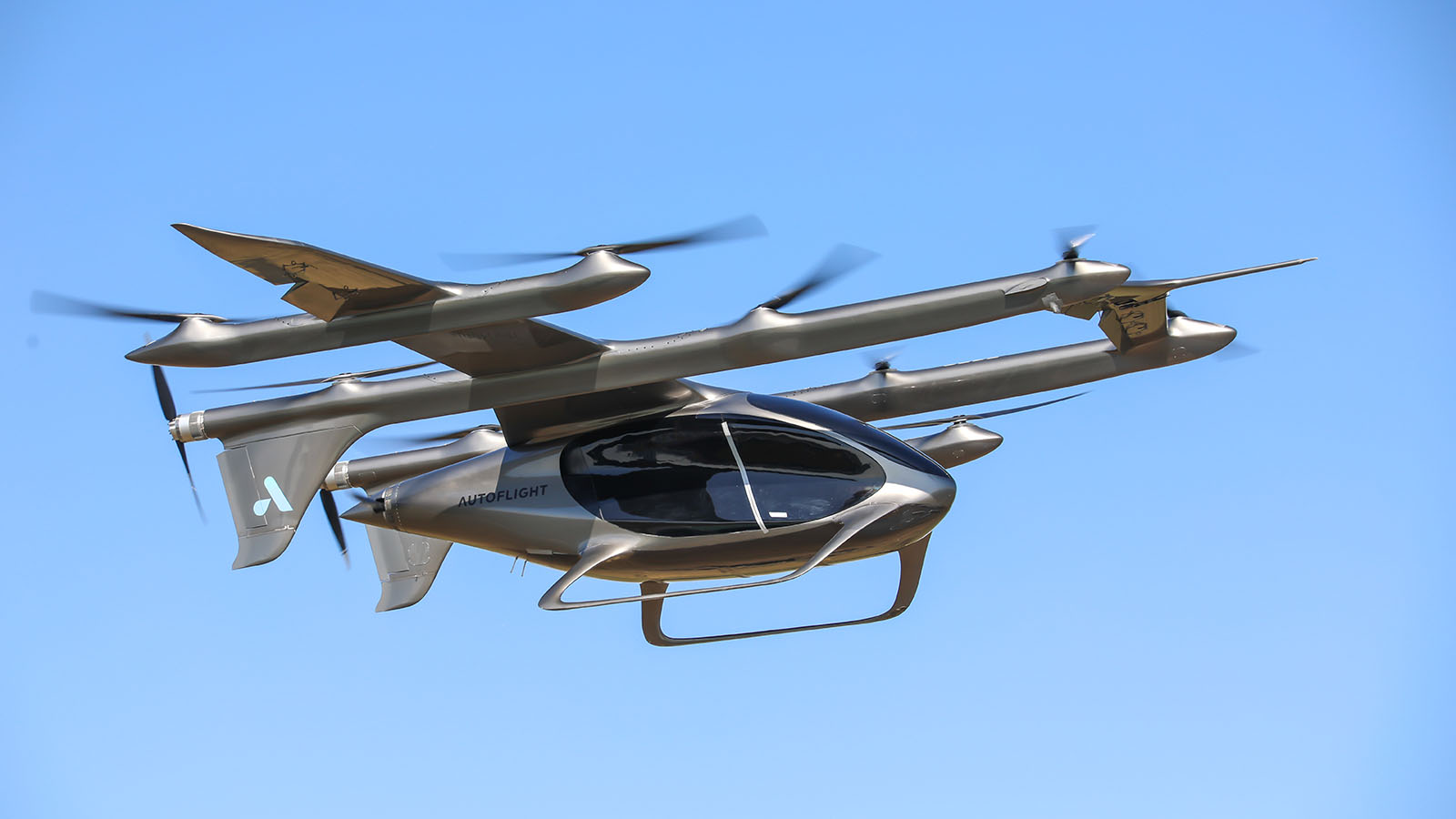Stay Up to Date
Submit your email address to receive the latest industry and Aerospace America news.
Flight in China beats previous electric vertical-lift record by 3 kilometers
AutoFlight’s 250.3-kilometer flight of its all-electric test aircraft should resolve any doubts about whether battery-powered vertical takeoff and landing aircraft will have the range to become a new mode of local transportation for passengers and cargo, the company’s president told me in an interview.
The Shanghai-based company’s prototype, the Prosperity I Gen 4, covered that distance on Feb. 23 by circling the company’s test flight facility in Eastern China for an hour and 38 minutes, the company announced today. The distance topped the previous record for an eVTOL held by California-based Joby Aviation by 3 kilometers. No one was aboard the AutoFlight aircraft, which was remotely piloted.
“This new record should help end the endless bickering about, ‘Oh, batteries are not good enough,’” said Omer Bar-Yohay, AutoFlight’s Seattle-based president. “Enough is enough. We’ve flown an almost 2-ton machine over 250 kilometers, and we’re not even the first to do something at that range.”
The purpose of the flight was to test the impact on endurance when there is a long drain on the battery at relatively low levels during the cruise phase. The aircraft circled the test flight facility 20 times, powered by a battery consisting of commercially available cells that were assembled by AutoFlight personnel.
“Most of the leading companies are buying the best cells we can buy and putting them together in a pack in-house. That’s what we’re doing,” he said.
Simulations predicted that the aircraft would fly about 250 kilometers and still have enough power to handle emergencies, such as diverting around extreme weather, or finding a place to land due to a component failure or because of the closure of the intended landing pad, Bar-Yohay said. He said the aircraft met or exceeded expectations based on those simulations.
AutoFlight also used the occasion to reveal new details about its newest aircraft design, the Gen 4. Until today, the company had given only a basic description of the concept as a lift-plus-cruise design in which some rotors only engage during takeoff and landing and are stowed aerodynamically during the forward cruise phase. That mode distinguishes the Gen 4 from Joby’s S4 aircraft, which employ tiltrotors to transition from lift to cruise.
AutoFlight elaborated on its design, saying Gen 4 has 10 lift rotors instead of the previous generation’s eight, and three rear pusher propellers instead of the two on the previous design
“The additional pusher propeller allows us to test some limits of the airframe design, but we’re going to go back to two rear propellers for the conforming prototype, I believe,” Bar-Yohay said, referring to the design the company ultimately may pursue for commercial production and certification.
AutoFlight says the data from the record-breaking flight in China will help it pursue certification from the European Union Aviation Safety Agency and, after that, FAA.
Bar-Yohay says he’s aware that some electric aircraft companies have notched longer flights, such as Vermont-based Beta Technologies. But while Beta’s Alia aircraft is VTOL-capable, it has flown its longest flights by making conventional takeoffs and landings via runways, which use less electricity.
“I think that the value proposition of the eVTOL is the ‘V’ — if you can take off vertically, and you can land vertically, and you can carry significant payload at distance,” he said.
Get the latest news about advanced air mobility delivered to your inbox every two weeks.
About paul brinkmann
Paul covers advanced air mobility, space launches and more for our website and the quarterly magazine. Paul joined us in 2022 and is based near Kennedy Space Center in Florida. He previously covered aerospace for United Press International and the Orlando Sentinel.
Stay Up to Date
Submit your email address to receive the latest industry and Aerospace America news.




